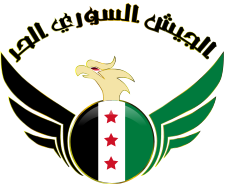The US House and Senate intelligence committees have approved CIA weapons shipments to opposition fighters in Syria, allowing the Obama administration to move ahead on the stalled program, senior congressional and administration officials said Monday, according to a report by the Washington Post.
Despite ongoing “very strong concerns about the strength of the administration’s plans in Syria and its chances for success,” the House committee reached consensus “after much discussion and review,” Chairman Mike Rogers (R-Mich.) said in a statement.
Both the House and Senate panels voted on the administration’s plan last week, officials said.
The agreement allows money already in the CIA’s budget to be reprogrammed for the Syria operation, a covert action that President Obama approved early last month. The infrastructure for the program, which also includes training, logistics and intelligence assistance — most of it based in Jordan — is already in place and the arms would begin to flow within the next several weeks.
Some lawmakers have criticized the proposal as insufficient to make a difference on the battlefield, and called for U.S. air support for the beleaguered rebels with attacks on Syrian airfields or establishment of a no-fly zone over rebel-held territory.
Others have objected to any U.S. military involvement in the Syrian civil war — a position supported in numerous American public opinion polls — and questioned whether the administration has a realistic long-term plan.
While voicing appreciation for Rogers’s efforts to “try to reach consensus,” Rep. Adam B. Schiff (D-Calif.), a member of the intelligence committee, said Monday night that he disagreed “and wish to make my dissent clear. In my view, the modest chance for success of these plans does not warrant the risk of becoming entangled in yet another civil war.”
Over the past several weeks, administration officials including Vice President Biden, CIA Director John O. Brennan and Secretary of State John F. Kerry have tried to answer those concerns in telephone calls and briefings.
Among the points they made was the need for U.S. “skin in the game,” in the form of weapons supplies. Although the CIA operation will include only light arms and ammunition, they argued, it will allow the administration to exert leadership and coordinate the many streams of aid flowing to the rebels from other countries, including sophisticated surface-to-air missiles coming from Saudi Arabia and other countries in the Persian Gulf.
Increased participation, they said, also would allow the administration more control over arms recipients, ensuring that weapons go to vetted members of the approved Free Syrian Army, rather than Islamist extremists also fighting against the government of President Bashar al-Assad.
At the same time, the administration hopes to improve its relationship with the opposition, which has complained about the paucity of weapons aid and U.S. reluctance to provide more than humanitarian and diplomatic support.
Officials also worked to assuage concerns of some lawmakers that the program would dominate CIA attention and resources, at a time when the administration has said it wants to steer the agency back to more traditional intelligence gathering and analysis.
Obama opted to approve the program as a CIA covert action to avoid international law restrictions on military efforts to overthrow another government and the need for wider congressional approval. Although approval by the intelligence committees was not required to initiate the program, the money must be taken from other programs the committees had already approved.
Officials declined to indicate the overall cost of the program but said it was significantly less than what it would cost the military to undertake the same operation.
In a letter to Senate Armed Services Committee Chairman Carl Levin (D-Mich.), Gen. Martin E. Dempsey, the chairman of the Joint Chiefs of Staff, estimated that the military price tag for using U.S. troops to train and assist rebel forces from outside Syria would be about $500 million a year.
Dempsey said that more robust options, including establishing no-fly or buffer zones inside Syria, or containing Syria’s government-held chemical weapons, would cost at least a billion dollars a month and require ships, aircraft and up to several thousand troops.
Each of those options would likely improve the rebel position and place more pressure on Assad’s forces, according to Dempsey, who has expressed public uneasiness over military intervention. But each also could have “unintended consequences,” he said, including a Syrian collapse that would empower extremists or “unleash the very chemical weapons we seek to control,” and could result in a loss of U.S. military readiness elsewhere in the world.
Dempsey’s letter, dated Friday but released Monday by Levin’s office, was a response to questions raised at a Thursday hearing in which Sen. John McCain (R-Ariz.) threatened to delay approval for Dempsey’s second two-year term as chairman.
McCain questioned whether the military was doing enough to assist the rebels, and asked Dempsey for his assessment of the costs, benefits and risks of various intervention options the military has prepared.
A no-fly zone, Dempsey wrote, “would require hundreds of ground and sea-based aircraft, intelligence and electronic warfare support, and enablers for refueling and communications. Estimated costs are $500 million initially, averaging as much as a billion dollars per month over the course of a year.”
Establishment of buffer zones inside Syria, he said, would require “thousands of U.S. ground forces . . . even if positioned outside Syria, to support those defending the zones” and a limited no-fly zone that “would push the costs over 1 billion dollars a month.”
Washington Post

Leave a Reply
You must be logged in to post a comment.